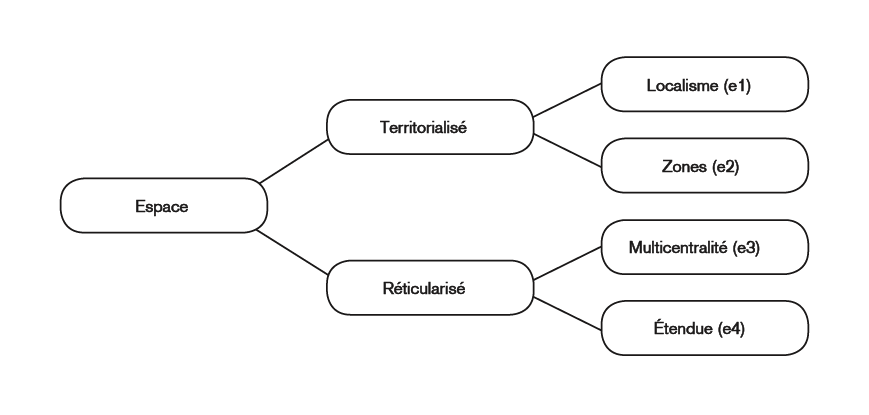Being mobile today: some recent findings from social science research and lessons for urban walking
Main Article Content
Abstract
This text deals with the issue of urban walking in the light of social science research on mobility in general. A good number of authors, without necessarily always dealing with walking as such, have developed statements which make it possible to identify useful reflections on this issue.
Thus, urban history invites us to understand the evolution of the place of walking in the city and to look at the urban transformations, in particular those resulting from the modernist period, from the angle of the barriers put in the way of pedestrian movement by the major transport infrastructures. Then, based on the distinction between mobility and displacement, can we question urban walking in its capacity to give us access, in a sensitive manner, to contexts that are certainly geographically close, but yet socially very different. In the same vein, we can also ask ourselves whether or not urban walking is part of the injunction to be mobile that characterises contemporary societies and whether or not it contributes to reinforcing our mobility capital.
For its part, the construction of 'spatio-temporal attitudes' makes it possible to better understand the logics underlying the practice of walking or, on the contrary, leading to its avoidance, at a time when travel time, thanks in particular to new information and communication technologies, tends to become a time in its own right. Finally, in this context, the meaning of waiting and stopping, as a pause in a peregrination, deserves to be understood in its entirety, as well as the devices put in place to improve the comfort of these two inseparable moments of movement.
Article Details

This work is licensed under a Creative Commons Attribution-NonCommercial-NoDerivatives 4.0 International License.
References
BASSAND, M.; BRULHARDT, M.-C. 1980. Mobilité spatiale. Bilan et analyses des recherches en Suisse, St-Saphorin (Lavaux), Georgi.
BOLTANS KI, L.; CHIAPELLO, E. 1999. Le nouvel esprit du capitalisme, Paris, Gallimard.
BULL, M. 2004. «Automobility and the Power of Sound», Theory, Culture and Society, n° 21, p. 243-259.
DELCHAMBRE, J.-P. (sous la dir. de) 2009. Autour de la socio-anthropologie du jeu, Louvain-la-Neuve, Recherches sociologiques et anthropologiques, n° 1.
DOBRUSZKES, F.; et al. 2011. «Réorganisation d’un réseau de transport collectif urbain, ruptures de charge et mobilités éprouvantes à Bruxelles», Articulo-Journal of Urban Research, online since 19 september 2011. URL: http://articulo.revues.org/1844#text, 7, p. 1-16.
FRISBIE, W.P.; KASARDA, J.D. 1988. «Spatial Processes», dans N. J. Smelser (éd), Handbook of Sociology, Newbury Park, Sage, p. 629-666.
HUBERT, M. 2008a. «L’Expo 58 et le “tout à l’automobile”. Quel avenir pour les grandes infrastructures routières urbaines?», Brussels Studies, n° 22, revue consultable en ligne (www.brusselsstudies.be), p. 1-17.
HUBERT, M. 2008b. «L’Expo 58 et la mobilité quotidienne à Bruxelles: une influence décisive et durable?», dans C. Deligne; S. Jaumain (sous la dir. de), L’expo ‘58, un tournant dans l’histoire de Bruxelles, Bruxelles, Le Cri, p. 115-143.
IGNAZI, G.; KERAVEL, F. 2000. «Ergonomie de la mobilité quotidienne», Transports Urbains, n° 102, p. 7-12.
KAUFMANN, V. 2001. «La motilité: une notion clé pour revisiter l’urbain», dans M. Bassand, V. Kaufmann, D. Joye (sous la dir. de), Enjeux de la sociologie urbaine, Lausanne, Les Presses polytechniques et universitaires romandes, Science, technique, société, p. 87-102.
KAUFMANN, V. 2002. «Temps et pratiques modales. Le plus court est-il le mieux?», Recherche Transports Sécurité, n° 75, p. 131-143.
KAUFMANN, V. 2008. Les paradoxes de la mobilité. Bouger, s’enraciner, Lausanne, Presses polytechniques et universitaires romandes.
LANNOY, P.; RAMADIER, T. (éds) 2007. La mobilité généralisée. Formes et valeurs de la mobilité quotidienne, Louvain-la- Neuve, Academia Bruylant.
LEBRUN, K.; HUBERT, M.; DOBRUSZKES, F.; HUYNEN, P. 2012. «L’offre de transport à Bruxelles», Bruxelles, Cahiers de l’Observatoire de la Région de Bruxelles-Capitale, n° 1.
MAURIN, E. 2004. Le ghetto français. Enquête sur le séparatisme social, Paris, Seuil, La République des idées.
MONTULET, B.; HUBERT, M.; HUYNEN, P. 2007. Être Mobile. Vécus du temps et usages des modes de transport à Bruxelles, Bruxelles, Publications des Facultés universitaires Saint-Louis.
MONTULET, B.; MINCKE, C. 2010. «L’idéologie mobilitaire», Politique, n° 64, p. 12-16.
REMY, J. 2005. «“Penser maison-penser ville”: à la recherche d’une cohérence dans les nouvelles extensions urbaines. Réflexions à partir de l’évolution du Brabant wallon en Belgique», dans F. Navez- Bouchanine (éd), Intervenir dans les territoires à urbanisation diffuse, La Tour d’Aigles, Éditions de l’Aube.
SOS Jeunes, Samarcande, Inter-Environnement Bruxelles, CAILLIEZ, J. 2008. Jeunes en ville, Bruxelles à dos? L’appropriation de l’espace urbain bruxellois par des jeunes de différents quartiers, Bruxelles, Roneo.
STUDENY, C. 2005. «Une histoire de la vitesse: le temps du voyage», dans B. Montulet; et al. (éds), Mobilités et temporalités, Bruxelles, Publications des Facultés universitaires Saint-Louis, Travaux et recherches, n° 51, p. 113-128.
URRY, J. 2006. «Travelling times», European Journal of Communication, vol. 21, n° 3, p. 357-372.
VANDERMOTTEN, C.; MARISSAL, P. 2003. La production des espaces économiques, Tome II, Bruxelles, Éditions de l’Université libre de Bruxelles.
VANDERMOTTEN, C.; MARISSAL, P. 2004. La production des espaces économiques, Tome I, Bruxelles, Éditions de l’Université de Bruxelles.

